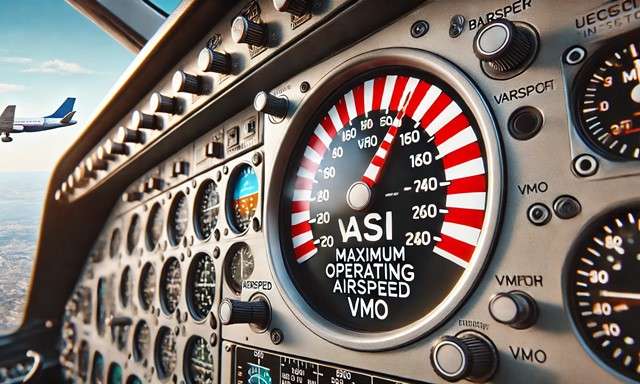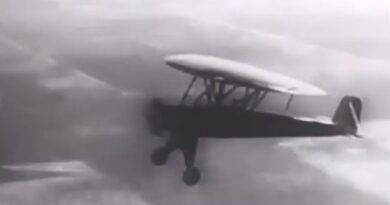Barber Pole in Aviation: A Complete Guide to Its Role, History, and Importance
The barber pole is an essential visual tool in aviation that indicates the maximum operating airspeed (Vmo) of an aircraft. This red-and-white diagonal marker on the airspeed indicator (ASI) helps pilots avoid overspeeding, ensuring flight safety. As altitude increases, the maximum allowable speed decreases, and the barber pole dynamically moves to reflect this limit, protecting the aircraft from structural damage or loss of control.
Barber Pole: A Symbol Rooted in Bloodletting and Barber-Surgeons’ Dual Roles
The barber pole, a familiar symbol of barbershops, has a rich and rather morbid history dating back to medieval times. Its red and white spirals originally represented the practice of bloodletting, a common medical procedure performed by barbers, who also served as surgeons. The red symbolizes blood, while the white stands for bandages used to stop bleeding. The rotating pole evokes the twisting of bandages, a visual reference to the skill and tools involved in the barbers’ dual roles in both grooming and rudimentary medical care. Over time, as barbers shifted solely to hair cutting and grooming, the pole became a universal sign for their trade.

Historical Background of the Barber Pole in Aviation
The concept of the barber pole dates back to early aviation days. Borrowing the visual aesthetic of traditional barbershop poles, early airspeed indicators used a similar visual cue to signal critical speeds. The striped pattern was chosen for its high visibility, ensuring that pilots could easily identify the safe airspeed threshold at a glance.
As aviation technology advanced, aircraft began flying faster and higher, necessitating better tools for monitoring speed limits. The modern barber pole was introduced as a way to adjust for changing flight conditions such as altitude and air density. By the mid-20th century, it had become a standard feature in most commercial and military aircraft. This feature allowed for more precise control at higher altitudes.
How the Barber Pole Works
The barber pole moves in response to the aircraft’s dynamic pressure and environmental factors. As an aircraft climbs, the air density decreases, causing the maximum safe indicated airspeed (IAS) to drop. The barber pole’s position adjusts accordingly, giving the pilot a visual limit that ensures the aircraft operates within its safe speed envelope. For aircraft flying near the speed of sound, this tool is crucial in preventing dangerous aerodynamic phenomena like Mach tuck or flutter.

Why Pilots Rely on the Barber Pole
In high-speed aircraft such as commercial jets, the risk of exceeding Vmo is significant, especially at higher altitudes where airspeed can be difficult to interpret. By constantly monitoring the barber pole, pilots ensure they stay within safe operational limits. Exceeding the indicated maximum speed could lead to catastrophic outcomes such as structural failure, loss of control, or aerodynamic instability.
In addition to protecting the aircraft, the barber pole also helps maintain passenger safety and comfort. By avoiding overspeed scenarios, pilots prevent airframe stress from causing sudden, dangerous maneuvers or emergency actions.
The Evolution of the Barber Pole
As aviation progressed, the barber pole evolved in its design and function. Early aircraft used fixed indicators for maximum speed, but these were insufficient at higher altitudes where air density and atmospheric conditions affect performance. The introduction of dynamic barber poles—which adjust based on altitude and temperature—was a game-changer, especially for jet aircraft flying at higher altitudes.
By the 1960s and 1970s, with the rise of supersonic aircraft like the Concorde, monitoring airspeed with precision became even more critical. The barber pole became a vital instrument in ensuring that aircraft didn’t exceed the transonic range, where shockwaves and turbulence could pose serious risks.
Key Takeaways
- The barber pole is a visual tool used in aviation to indicate the maximum operating airspeed (Vmo).
- It adjusts based on altitude and atmospheric conditions, protecting the aircraft from overspeed scenarios.
- The barber pole originated from early airspeed indicators and evolved alongside aircraft technology.
- Pilots rely on this indicator to maintain safe flight operations, especially at higher altitudes.
Conclusion
The barber pole remains a critical part of modern aviation, guiding pilots to fly within safe speed limits. Its historical roots and evolution show how aviation has continuously adapted to meet the needs of faster, higher-flying aircraft. As technology continues to evolve, the barber pole will likely remain a cornerstone of flight safety, ensuring that pilots have a clear, dynamic indicator to guide their airspeed decisions.


